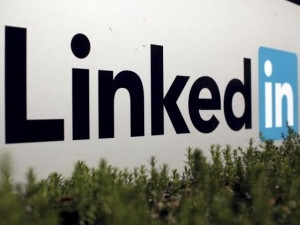
LinkedIn's high buying price of $26.2 billion was the result of five potential suitors all trying to win over the professional social network, which was eventually acquired by Microsoft.
The courtship was comprehensively detailed in a proxy statement released recently by the Securities and Exchange Commission in the US.
None of the parties interested in buying LinkedIn and its online network of 433 million professionals were named, and are instead referred to as Party A, B, C and D.
Salesforce confirmed to Recode it was one of the bidders and there is speculation Facebook and Google were two of the others.
How it went down
The meetings started in February, less than five months before the acquisition was announced. Microsoft was the first to meet with LinkedIn CEO Jeff Weiner, who said the network was interested in a potential business combination.
Party A showed interest in early March, and Party B got involved soon after.
Both Microsoft and Party A confirmed they were serious about the acquisition and had started work on the project.
In mid-March, the LinkedIn board met and discussed contacting other companies that may have an interest in acquiring LinkedIn.
Weiner contacted Party C, which contemplated an acquisition for two weeks, and then let LinkedIn know it was not interested.
LinkedIn founder and board chairman Reid Hoffman contacted Party D, and after meeting, the party said it was not interested at the time.
Party A submitted an indication of interest to acquire LinkedIn for a price of between $160 and $165 per share. It would be a mix of cash (up to 50%) and Party A common stock. Microsoft did the same at a price of $160 in cash per share.
Both offers by Microsoft and Party A requested LinkedIn to enter into an exclusivity agreement.
In early May, Party B informed LinkedIn it was no longer interested in pursuing an acquisition.
The LinkedIn Transactions Committee met and decided LinkedIn was only prepared to enter exclusive negotiations at a price of $200 per share.
Neither Microsoft nor Party A chose to pursue exclusivity at that price.
Party A submitted a revised proposal at $171 per share of LinkedIn common stock, with half of the consideration in cash.
Microsoft submitted a revised proposal at $172 in cash per share of LinkedIn common stock.
The committee met again and decided the parties needed to come back the next day with their best price.
Microsoft's next offer was $182 in cash per share. Party A's was the same, but consisted of $85 in cash and the remainder in Party A common stock.
The LinkedIn board discussed the two proposals and unanimously decided to proceed with exclusivity with Microsoft.
On 14 May, LinkedIn signed an exclusivity agreement with Microsoft that expired on 12 June. The agreement, among other conditions, prohibited LinkedIn from soliciting alternative acquisition proposals or negotiations.
Plot twist
A few days later, Party A submitted a revised proposal to acquire LinkedIn at $188 per share, also consisting of $85 in cash and the remainder in Party A common stock.
The transactions committee met and discussed the receipt of the revised proposal in light of the terms of the exclusivity agreement with Microsoft. It was noted the revised proposal was similar economically to the implied value of the last proposal sent by Party A.
The committee said it would not respond to Party A and that LinkedIn would evaluate the situation further closer to the expiration of the exclusivity period with Microsoft.
On 25 May, Party A let Hoffman and Weiner know that Party A's stock value had risen since the revised proposal was sent through and therefore increased the acquisition price.
Meanwhile, a merger agreement between Microsoft and LinkedIn was being drafted and sent back and forth between the companies.
On 5 June, LinkedIn received another revised proposal from Party A offering approximately $200 per share of LinkedIn common stock. This again was linked to Party A's stock price at the time.
The committee met to discuss the revised proposal from Party A and decided not to respond to Party A but to tell Microsoft its current proposal of $182 in cash per share of LinkedIn common stock was no longer supportable and encourage Microsoft to offer $200 per share.
On 10 June, Microsoft submitted a revised proposal to LinkedIn that provided for an acquisition of LinkedIn for $190 in cash per share of LinkedIn common stock.
After much discussion, the next day Microsoft upped this price to $196 in cash per share.
Final versions of the merger agreement were negotiated.
On 11 June, LinkedIn informed Microsoft the LinkedIn board had approved the acquisition, and the $26.2 billion merger agreement was signed.
Share